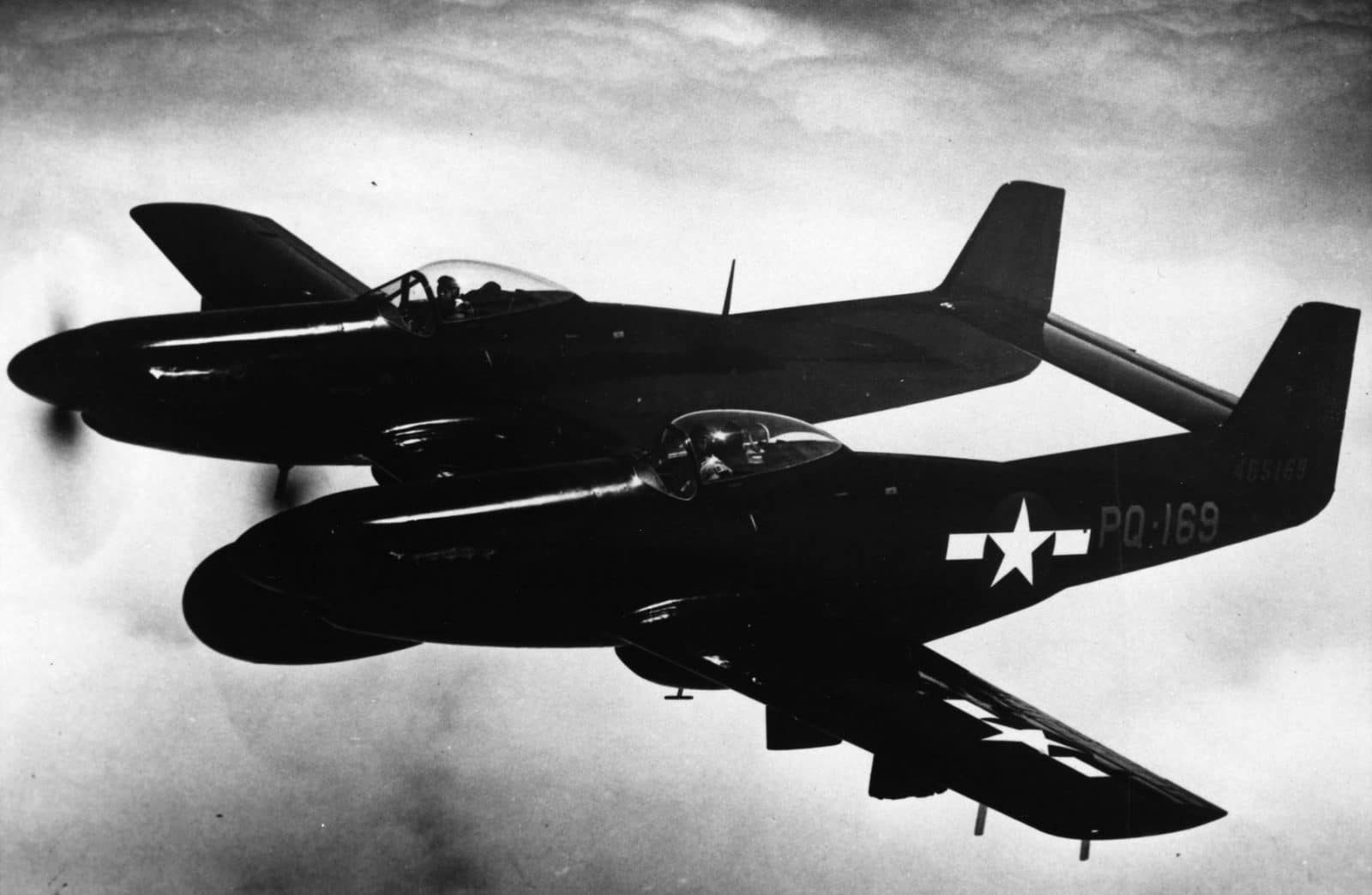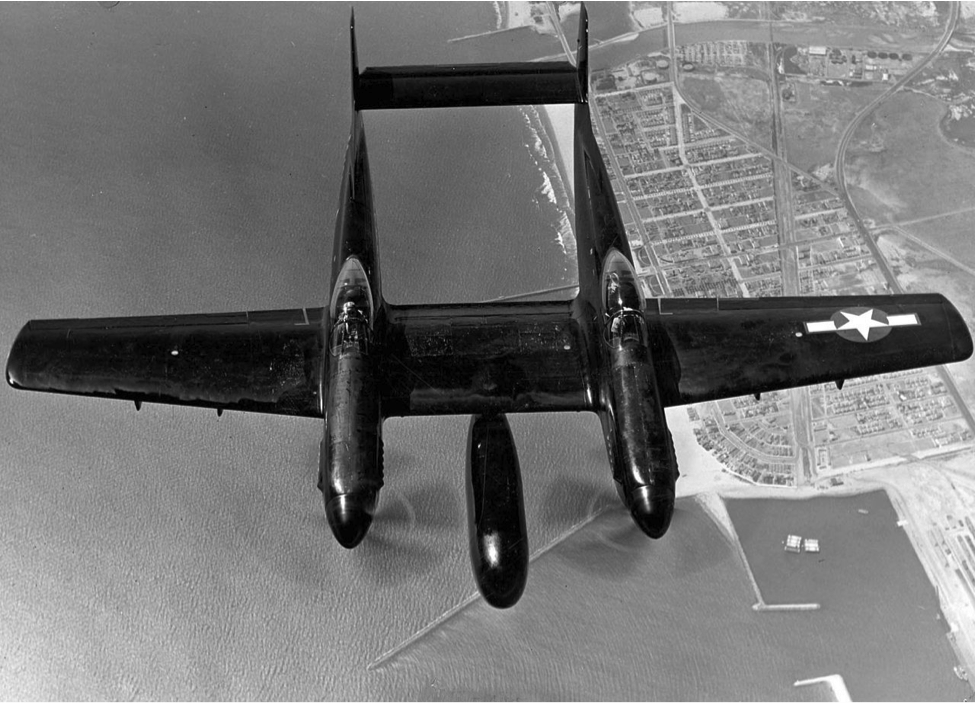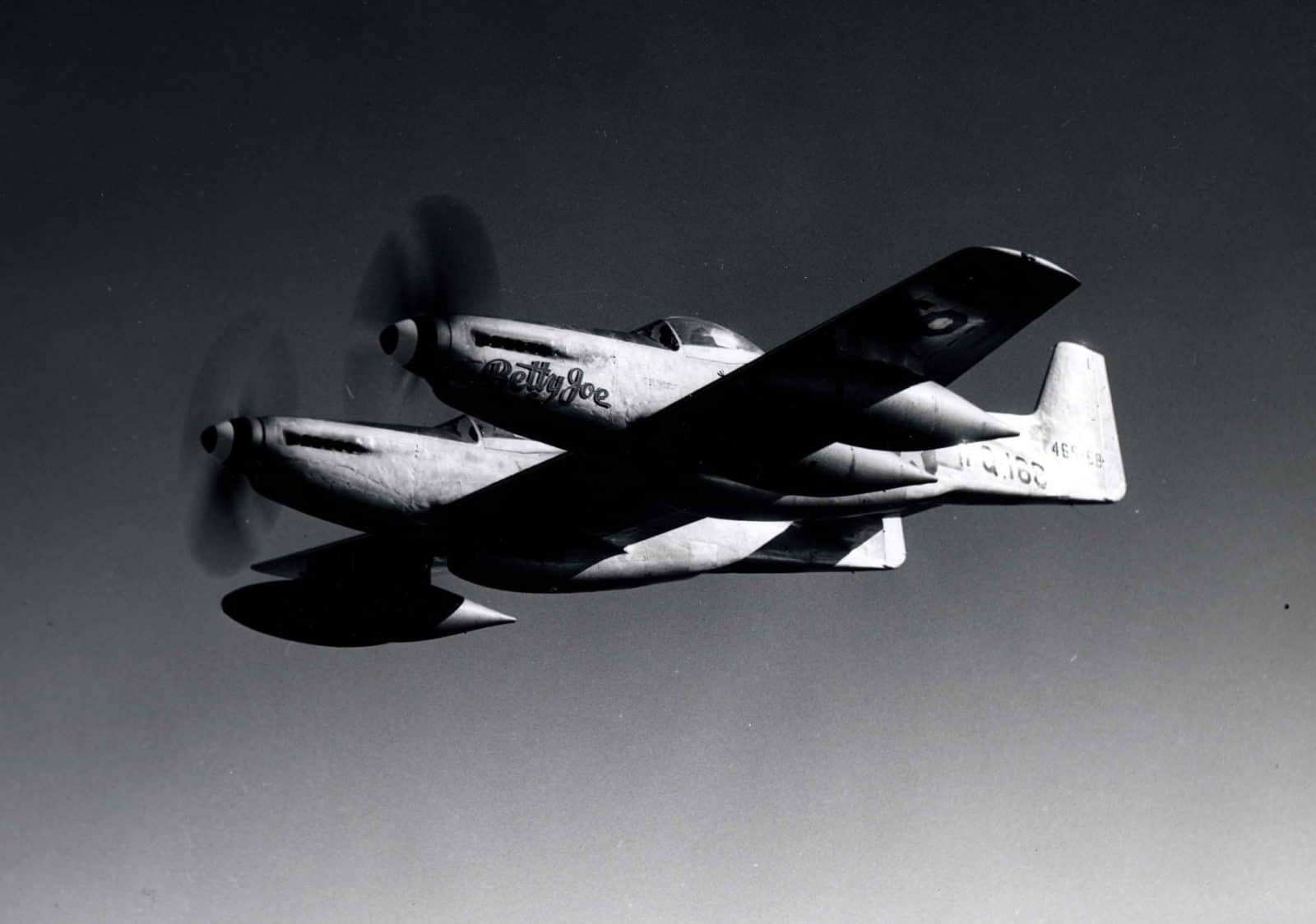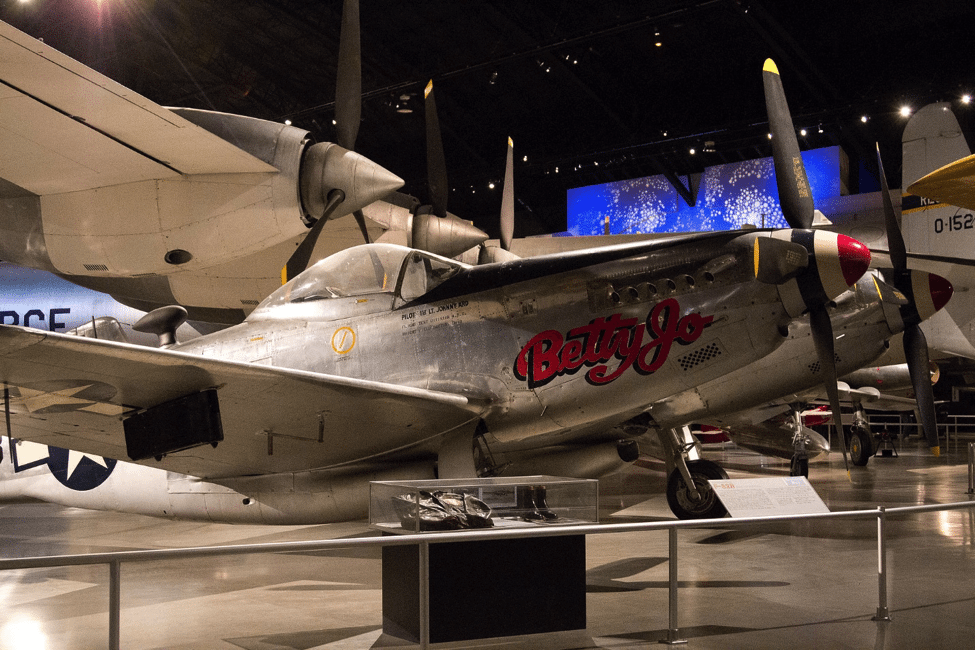First in Korea
Strategic Air Command used F-82Es as long-range escort fighters. Air Defense Command used radar-equipped F-82Fs as all-weather day/night interceptors. When war came to the Korean peninsula in 1950, F-82s based in Japan were some of the first American aircraft to operate over Korea. F-82s even shot down the first three North Korean aircraft of the war. The F-82s went on to destroy a total of 20 aircraft in Korea.

Round-the-World Service
Eventually shown the door by SAC because of the development of jet-powered interceptors, the F-82F and F-82G continued to perform interception missions for which the USAF and Air Defense Command had no other suitable aircraft. A jettison-able radar pod was mounted under the center wing section and a radar operator placed in the right seat. Presto- the F-82F, a radar-equipped fighter aircraft to replace war-weary P-61 airframes in the air defense night interception role. Similarly equipped F-82Gs were used for air defense missions in the Far East and winterized F-82Hs operated from bases in Alaska. About the only place F-82s were not based was Europe.

Getting Out of the Jet’s Way
Replaced in Air Defense Command by the jet-powered Lockheed F-94 Starfire, the last operational ADC Twin Mustang outfit was the 318th Fighter Interceptor Squadron at McChord AFB in late 1951.
The 272 total Twin Mustangs built by North American Aviation ended up having very short operational lives. Starting in February of 1950 SAC phased out the F-82E in favor of the jet-powered Republic F-84E Thunderjet for bomber escort duties. In the Pacific, the F-82Gs were replaced Lockheed F-94A Starfires beginning in April of 1951. Air Defense Command replaced their F-82Fs with F-94As in beginning in June of 1951. A few of the ADC Twin Mustangs remained in service as target tugs.

Twin Mustang Put Out to Pasture
When lack of parts inevitably made it impossible to keep the remaining airframes airworthy, all F-82s were withdrawn from service. The last remaining F-82Hs were flown to Elmendorf Air force Base in Alaska for storage and disposal in June of 1953. The last Twin Mustang was officially retired on 12 November 1953.

Eyeball the Most Famous Twin Mustang Yourself
Since 21 June 1957, the world’s most famous Twin Mustang, Air Force serial number 44-65168, Betty Joe, has been on display at the National Museum of the United States Air Force at Wright-Patterson Air Force Base in Dayton Ohio.
[youtube id=”uSgoDW-Xydk” width=”800″ height=”454″ position=”left”]
